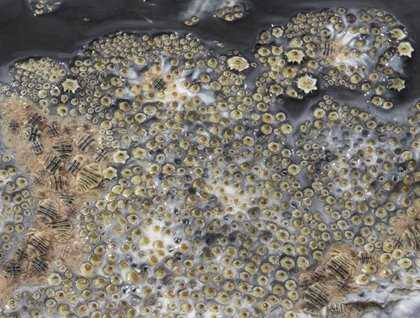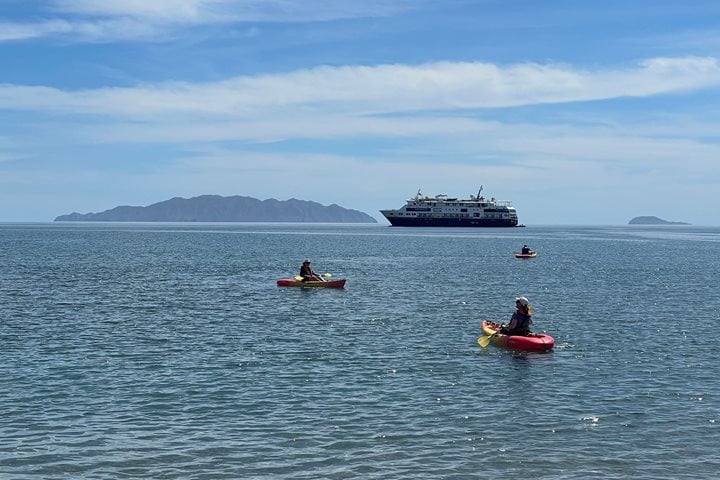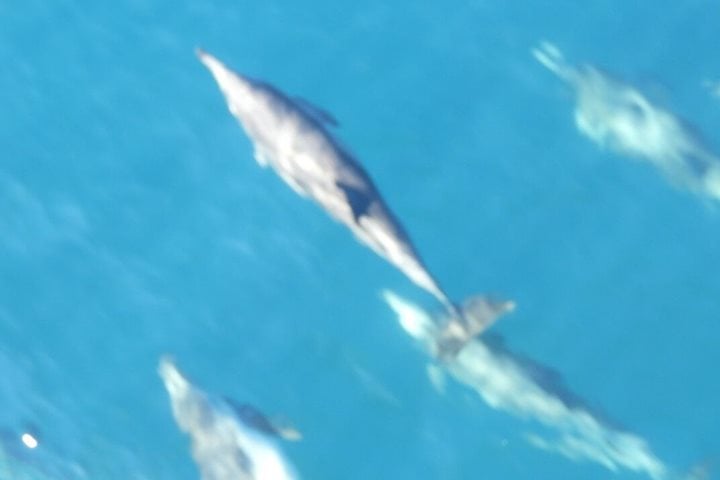After a peaceful night at anchor off the northern portion of Magdalena Island, near Boca de Soledad, we watched the sunrise over that unique desert ecosystem known as the Magdalena Plain. There, orchilla-covered cacti, coyote, and mule deer get damped by the frequent morning fogs caused by the moist Pacific air passing above the cold California current. And just off the mangrove-lined shores, the gray whales raise their young. We boarded our expedition landing craft and enjoyed once again the privilege of getting close to those remarkable creatures; we watched numerous baby whales playing around, some practicing that favorite pastime of young mammals of all species, climbing on top of their mothers. Other calves seemed to be practicing the feeding technique that they are going to use later for the rest of their lives, and grabbed mouthfuls of mud that we observed flowing out of their mouths at the surface. Some other babies obediently followed their moms swimming around, getting stronger and more resistant, in preparation for the long migration north to their summer feeding grounds.
Before lunch, the National Geographic Sea Bird sailed south through the Hull Canal and headed to our afternoon destination. During our transit, we watched abundant birdlife flying around and on both shores, including species such as marbled godwit, willet, crested caracara, osprey, and brant. Later, we went ashore on the southern portion of Magdalena Island and had a wonderful hike through the dunes to the Pacific side. We learned about the ancient people that made a living here and left behind huge shell middens and artifacts such as rudimentary stone tools; the younger members of our expedition and some others not so young had a wonderful time jumping from top of the beautiful barchans dunes and ended completely covered with sand, including in parts of their anatomy that rarely see the sun. Once on the Pacific, we walked the endless beach of the Santa Maria Bay, also known as Sand Dollar Beach, and had a great time looking at the very abundant shells and sand dollars that give this place is nickname. And as the sun slowly neared the western horizon, the last day of a great expedition came to an end.







